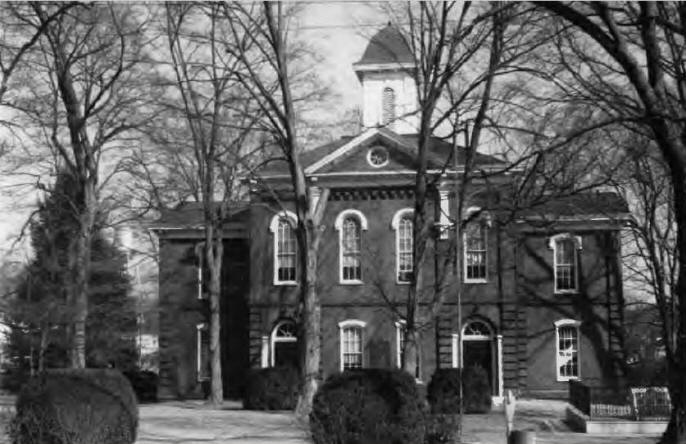
A Little History

|
Below is the information that was submitted back in 1975 requesting to have the courthouse added to the National Register Of Historic Places. Loudon County was established by the Tennessee legislature in 1870,and the present courthouse was completed two years later. The courthouseand county jail were built by twin brothers, Eli and J. WesleyClarke, for a total cost of $7,000. The red brick courthouse is a formal version of the popular late Italian Villa style of architecture of the late nineteenth century. The two-story structure is characterized by its white painted woodtrim and cupola. The rectangular, two-story central block with two story wings, extending from the left and right side elevations serve to emphasize the symmetrical character of the plan. These identical projections feature centrally located doorways at the gable end wall. Paired entrances are located at either side of the main front elevations. These are punctuated by semi-circular transom with pilasters located below the transom arch. The greater proportions of the second story, main block, would serve to identify the location of the main courtrooms. The symmetrically spaced windows feature round heads with shallow hood moldings. The decorative treatment of the main facade features common bond brick bearing walls with built-up brick quoin detailing appearing below the string course with plain quoins extending above the string course and appearing again on either side of the main entrance doorways. A decorative step-corbie appears below the eaves and beneath the decorative roof gable on the main front facade. The upstairs courtroom was recently altered to rearrange the space for more usability. The building remains basically unchanged, however' and has been extremely well maintained. Many commendations have been received because of the neat and clean appearance of the courthouse. From the time of the early settlement in Tennessee down to the present time, the courthouse has played a vital role in the life of the community. In addition to serving as a place to hold court and carry on the affairs of the county, it has served a multitude of other purposes. Since it was the only available place in many instances, meetings of all kinds, from political to religious, have taken place in the courthouse. The steps and yard have been favorite locations for political oratory, and have heard the chant of the auctioneer and the pleading of the itinerant preacher. Held regularly are the sessions of those who gather to engage in a game of checkers, swap knives, whittle, or just comment on the problems facing the world. To understand the real significance of the Loudon County Courthouse, one must realize that Loudon has always been a divided county. Geographically it is divided into three irregular, wedge-shaped pieces with the- Tennessee River splitting it down the middle and the Little Tennessee River further dividing it. In the early nineteenth century the present Loudon County belonged to Roane, Blount, and Monroe counties. After several abortive attempts to form a new county, the population of the area increased until the Tennessee legislature was petitioned to create a new county in 1870. The county has not only been geographically divided, it has been politically divided as well. A strong unifying force has been the courthouse building. In 1961 a bridge was built across Fort Loudoun Dam and for the first time travel between the courthouse and Greenback became convenient. Up to this time an irregularly scheduled ferry was the only means of crossing the Tennessee River. Not only is the courthouse important from a political standpoint, it also possesses architectural significance. It is an outstanding example of Italianate architecture and has been little changed and well maintained since its erection in 1872, It is the dominating building and focal point in the downtown area. |
BACK
12/23/19